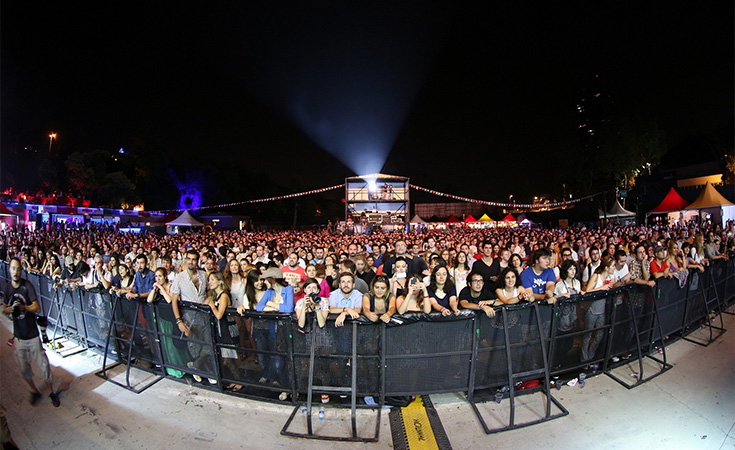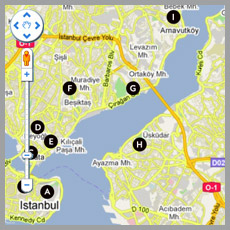Turkey’s first ‘culture, arts and entertainment research’ is complete!
Who has fun in Turkey, and where?
What are the new entertainment trends in Turkey and the World?
Who are the trendsetters?
How did the entertainment scene change in the last decade?
Which parts of Istanbul are popular?
How’s entertainment scene outside Istanbul?
Turkey’s first ”trends” research in Turkish entertainment sector is completed by Bahçeşehir University Creative Industries Centre, for URU Group who runs KüçükÇiftlik Park. The results of the research show who does what for entertainment in Turkey, what the trends are in Turkey and the world, changes in entertainment styles, which neighborhoods are popular and how entertainment is outside Istanbul.
Research Results
Who has fun in Turkey? Who go out for entertainment?
In Turkey, people from all social and economic income and status groups, ethnic, religious or regional origins and sexual orientations entertain themselves. In summary;
“Jet-Set”, the highest income group. This group include people in “celebrity” status featuring in tabloids.
High income, but relatively secondary to jet set, business class people. This group prefers more “alafranga” / European entertainment style, they are more open to global taste.
Relatively hig income group that has a more “alaturka” / local-traditional entertainment preferences.
Upper-middle class, working in sectors like finance-banking or creative jobs like media, marketing or arts. These people are open to global taste and are very effective in trendsetting.
Middle-class, with relatively lower income but “bohemian-bourgeois” lifestyle. This group also effects the trends in entertainment. These people have a “urbanized-bourgeois” style, but have bohemian stand point with their critical attitude.
Youth: As the rest of the world, definition of youth in Turkey is broader now. Both students and early entrepreneurs broadened and diversified the youth category. With the raising number of foundation universities (as opposed to state ones) a band of youth with bigger pocket money to spend joined the scene.
Conservatives: Their presence was unknown or ignored in the past. Groups of people with a higher sensitivity for Islam but more open to secularism are consuming more of everything and coming closer to modern lifestyle to take their place in entertainment scene.
Ethnic-religious minorities maintaining their valued entertainment styles, e.g. Kurds, Alawites …
Who sets new entertainment trends and venues?
From the previous paragraph;
“Jet-set” groups
Alafranga entertainment groups,
Upper-middle class creative industry workers,
Bohemian bourgeois
Youth
What are the current entertainment trends in the world?
It seems the world is going towards a trend called “lifestyle consumerism”, where more “individualized” consuming patterns are adopted in this post-industrialist era.
Alternatives for popular and mainstream life and music styles are increasing in numbers. People tend to go to places where they feel “special” and “unique”.
They want to share special experiences based on “themes”. Also more global and cosmopolitan styles combining different cultures emerge and stand out.
With digital world coming forward, it is claimed that virtual reality and social media pull people “indoors”, but entertainment venues and forms that prioritize “experience economy” and “interactivity” achieve success. While people communicate through social media, hey still need real people and venues to have fun. And entertainment venues achieve success as they get better at reflecting that virtuality, genuine experience and interactivity …
Is Istanbul catching world trends? Or does it have an entertainment model of its own?
Istanbul is very good at following world trends. Both follows the trends successfully and combines it with Turkey and Istanbul locality in interesting and cross-breed ways. In this manner Istanbul has an entertainment model of its own. But here’s a point of importance worth mentioning; Istanbul follows global trends quickly but “new” is overrated in Istanbul and everything gets boring quicker than expected. We strive for anything “new” but we consume all these very quickly and give them up as fast. This makes persistence very difficult.
What part of Istanbul is popular in terms of entertainment recently?
Galata-Karaköy-Tünel triangle stands out as the major entertainment zone. Interesting, innovative and tempting venues have been opened in Karaköy recently.
Karaköy-Kabataş line may be expected to get popular as Galataport- Salıpazarı project moves forward. And for this reason it’s not hard to foresee that Dolmabahçe-Maçka line will be joining already historically strong Nişantaşı-Teşvikiye recreation zone.
Aside for these, there’s Kadıköy Bazaar and Bagdat Street on Anatolian side.
Beyoğlu preserves its usual significance and after the completion of Talimhane Project, Tarlabaşı Project also seems to grow Beyoğlu even bigger.
Both sides of the Bosphorus between the two bridges will likely get more popular …
Bakırköy-Florya line could get broader and spread out a little …
Local and interesting spaces emerge in socio-economically “peripheral” neighborhoods. We see dance clubs open till evening aimed at high school teenagers, or folk bars in vicinities like Gaziosmanpaşa.
Hookah cafes appear almost everywhere and provide the relatively conservative, non-alcohol user customers an important site for socialization / entertainment.
Did the entertainment venue-goer profile change in the last decade?
Yes. Consumer groups diversified in socio-economical status, income level, social status ethnic-religious lifestyle differences. More people from various backgrounds now come together in many entertainment venues. In this context there was a polarization in the past and more adaptation and cohesion is observed.
Economical differences still matter as a tool of separation. Ticket prices, entrance fees or “selective” – this may be required due to “commercial” or social” reasons – attitude of venue bouncers may leave certain groups out.
Women, youth and conservatives going out more often and more frequently are considered among the most important transitions.
INFO:
Method of Research:
Qualitative methods were used in this research, with the aim to determine new trends in culture, arts and entertainment sector. This research was done in two modules.
First module; culture, arts and entertainment economy and trends and forecasts on possible future tendencies were analysed and summarised through a scan of sources. First module clears out the economical and socio-cultural infrastructure of entertainment scene in Turkey and the world and makes forecasts about near future. Turkey being very open to global tendencies especially in entertainment makes this module essential for others to come. A press scan for 2003-2013 period was done and a number of scientific books and articles were used.
Second module; An expectations and visions analysis of the sector leaders in Turkey. People of significance in culture-arts and entertainment sector may easily and directly determine sector’s direction with their powerful position in Turkey. This section aims to determine how these sector leaders define and evaluate new trends, what criteria/products they use and which communication channels prove effective in reaching this group. In this module:
Managers in culture, arts and entertainment sector
Media members and columnists who have an important role in shaping the sector as both producers and consumers
Scientists who have made scientific researches on this subject
Were interviewed using semi structured in-depth interviewing method. Scientific results were evaluated using international and YÖK (Board of Higher Education) defined scientific and ethic subjectivity criteria.
This research was made for URU Group to contribute to entertainment sector, by Volkan Aytar, Deputy Director of Bahçeşehir University Creative Industries Centre (BAUKEM), under the supervision of Prof. Dr. Haluk Gürgen, Dean of Faculty of Communications, Bahçeşehir University. We are grateful to URU Group for sharing the research results with Istanbul Digital Platform visitors.



















